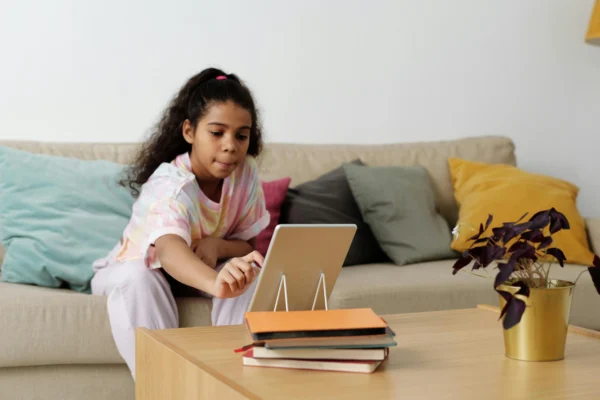Screen time for kids is one of the most common sources of stress in modern parenting. If you’ve ever tried to end a show or take away a tablet and been met with instant resistance, you’re not alone. Many families deal with daily power struggles over screens. The good news? You don’t have to battle every time you want your child off a device.
By creating a few clear and consistent screen time rules, you can manage your child’s screen time without constant negotiations or meltdowns—much like how simple decluttering tips can help keep the house clean without daily stress. It’s all about building healthy habits from a young age without making screen-use feel like the enemy.
1. Start with Observation
The first step in limiting screen time is paying close attention to how much time your child actually spends on devices each day. Whether it’s watching TV, video chatting, or using educational programming, tracking this gives you a clearer picture of when and why your child turns to screens. For example, do they watch during homework breaks or use devices to wind down at night?
Talk to your child about what they enjoy most and invite them into the conversation. Kids, even young children, respond better when household rules are created together. Explain the “why”; it’s because the American Academy of Pediatrics recommends limiting screen time for children younger than age 5 to no more than two hours of high-quality programming. This kind of open communication builds trust and sets the foundation for screen time limits that everyone can respect. Plus, it helps kids understand the health benefits of not spending too much time on their devices.
2. Set Clear, Consistent Boundaries

Consistency is critical when it comes to screen time rules. Start by defining screen-free times and places, such as mealtimes, bedtime, or when getting ready for school. Set reasonable limits around how many hours per day devices can be used, especially for young kids, and stick to them.
Use tools like parental controls or visual timers so your child knows when their time is up without constant reminders from you. Also, make sure that when you set limits, other children in the same household follow them. This helps eliminate the “bad cop” dynamic and builds more independence around media use.
3. Empower with Choice and Rewards
You can still give your child some control over their screen use without letting it take over your home. One way to do this is by letting kids choose when to use their allotted time, whether right after school or after dinner, so they feel some ownership. Consider introducing screen coupons, a weekly media plan, or an “earn-to-watch” system tied to chores, homework, or good behavior. For example, if a child completes their homework and spends time helping clean the kitchen, they earn screen time later. This action encourages them to spend more time learning and building problem-solving skills.
4. Lead by Good Example
Managing screen time for kids starts with showing them how it’s done. If you’re on your phone while asking your child to stop watching TV, the message won’t stick. It’s one of the most overlooked parenting mistakes mistake when it comes to managing the kid’s screen time. Instead, model healthy habits by keeping your own screen use in check, especially during shared family moments like meals, playtime, or bedtime routines. Leave your computers and log out of the internet whenever you’re around your kids.
Eliminate background TV when it’s not being actively watched, and avoid bringing phones or tablets to the table. The American Academy of Pediatrics also advises avoiding background TV, which can distract children from play and disrupt social development. These small choices reinforce the idea that screens are not the center of life. Children younger than 8, in particular, are very impressionable and will often imitate their parents’ behavior. Set household rules that apply to everyone and follow them yourself.
5. Provide Alternatives and Fill the Gaps

One of the main reasons kids resist screen time limits is because they don’t know what else to do. That’s why it’s important to have a plan for what your child can do instead of watching. Keep a list of other activities like crafts, board games, outdoor play, or music time. Rotate toys or create simple “boredom boxes” with books and art supplies so your kids won’t have too much screen time.
For young children, less time spent with electronic devices often leads to more time engaging in social skills, creative play, and physical activity which are all crucial for development. If your child watches screens as a default when they’re bored, it’s your job to fill that gap with meaningful options. This not only helps reduce excessive screen time but also reminds your child that fun doesn’t always come from a device.

